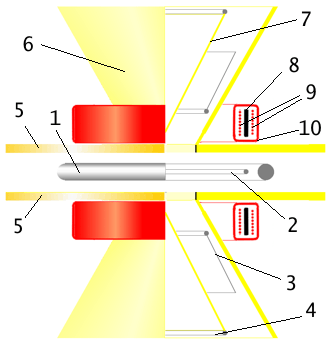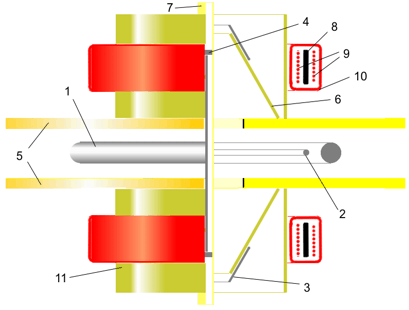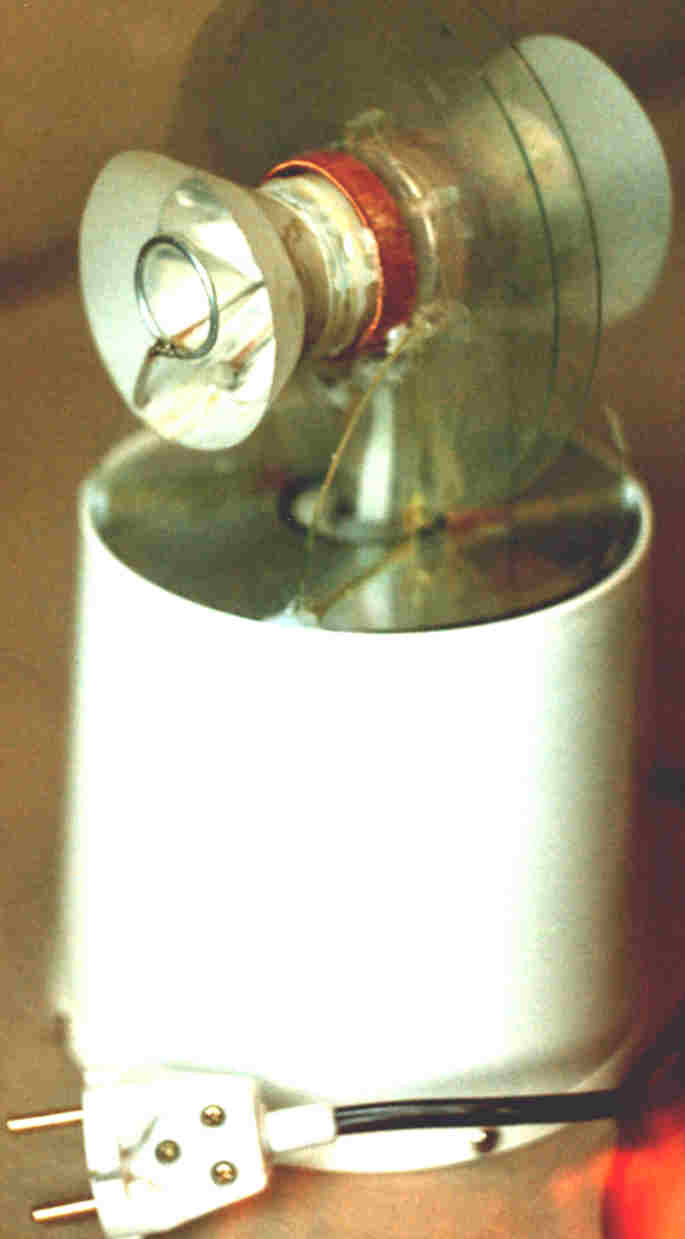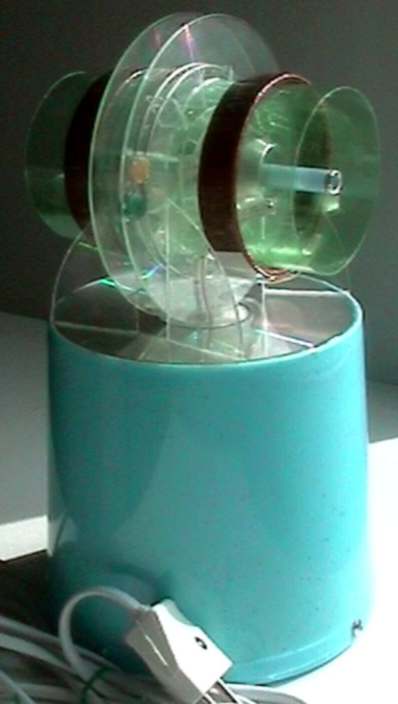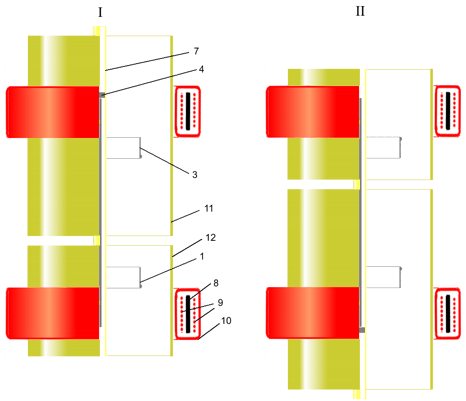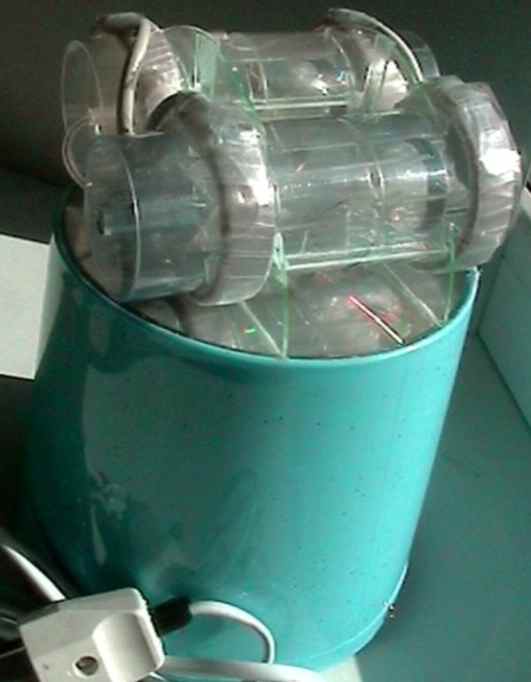Alexander A.Shpilman ( sah@nursat.kz )
The Imitator of a "Place Power" IPP-2 and IPP-3
Probably, any design can be improved
indefinitely. So on Fig.1 design IPP-2 which is described in "The
Imitator of a "Place Power" IPP-2". is shown. On Fig.2 the advanced design
- IPP-2K is shown. More compact and effective.
|
The
design consists of two dielectric disks 2 with apertures in the center, the
electrodes 1 and 2 are settled down between these disks. The electrode 1 is
an aluminium ring, 2 is a ring from a thin tungstic wire. The electrodes 3
(the aluminium cones with the cut off top) and the aluminium rings 4 are
placed in two dielectric cones 6. The pulsing
voltage 15kV + 130V is fed on the electrodes 1. The pulsing
voltage 15kV is fed on the electrodes 2. The pulsing
voltage -15kV is fed on the electrodes 3. The electrodes 4
have zero potential. The vector
potential of spiral structure is created with two toroidal electric coils 10
and cylindrical 9, reeled up on the iron rings 8. The
vector potential of spiral structure is created with two toroidal electric
coils 10 and cylindrical 9, reeled up on the iron rings 8. |
Fig.2 The
design differs: 3 -
aluminium cones with the cut off top with the pointed edge of a foil at top.
On cones the pulsing negative voltage -45 kV is
fed. The
zero electrode 4 is made in a dielectric tube 7 which increases a spark
interval between electrodes 3 and 4 due to that the design turns out more
compact at higher working voltage. Dielectric cylinders
11 isolate toroidal electric coils 10 from high-voltage electric breakdown
from cones 3. |
|
|
|
One of primary factors
of generation DSS of elements is electric recharging
ions. Is tempting to
try to make the device with repeated electric recharging
ions and DSS elements.
For example, as it is shown on Fig. 3.
|
|
|
The
design will consist of two identical ionizers I and II, each of which will
consist from dielectric tubes 11 and 12, established on one axes and with a backlash between them of
3-
On an
electrode 1 the pulsing voltage +30 kV is
fed .
On an electrode
3 the pulsing voltage -45 kV is fed pulsing.
The electrode 4 has zero
potential.
The vector potential of
spiral structure is created with two toroidal electric coils 10 and cylindrical
9, reeled up on the iron rings 8 (as it is described in "The
Imitator of a "Place Power" IPP-2"), which put on dielectric tubes 11 and
12.
The corona discharge on
the pointed edge of a tube from an aluminium foil 1 (top on figure) ionizes
air, inducing ions c a positive electric charge. Ions (and DSS elements) with a
positive charge, carrying away air, drift to an electrode 3 where occurs them electric recharging (change of a sign on an electric charge on opposite). Then ions with a
negative charge together with a stream of air leave upwards on an axis of the
device (ionizer I). The electrode 4 stabilizes the corona discharge on an
electrode 3 and focuses a stream of ions along an axis.
Ionizers
I and II are directed in the opposite sides, so ions (and DSS elements) having
deviated from movement along an axis of one ionizer, can get on an input of
another, thus, having repeated electric recharging.
In the
given design it is much easier to adjust distance between electrodes, achieving
intensive the corona discharge.
Due to innovations
efficiency of a design considerably raises.
|
|
You can buy the imitator of a "place
power" IPP-3 Information on E-mail: alexandrshpilman78@gmail.com |
